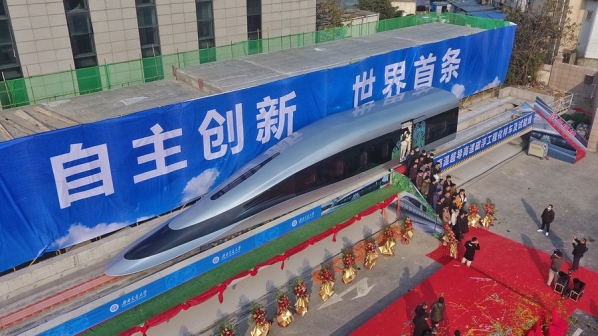The 21m-long, 12-tonne power car, which uses high-temperature superconducting (HTS) maglev technology and has a carbon fibre lightweight body, was developed through a Yuan 60m ($US 9.2m) project by Southwest Jiaotong University, China Railway Group and CRRC. High-temperature superconducting maglev technology is a cheaper alternative to low-temperature superconducting technology which is used in earlier projects.
Prof Sun Zhang, a railway expert at Shanghai Tongji University, says the new train is designed for operation at normal atmospheric pressure, rather than in a vacuum tube as with Elon Musk’s Hyperloop where much higher speeds are proposed. “The Chinese trains are pragmatic while Musk’s hyperloop is futuristic,” Sun told the Global Times.
“Although the theory sounds good, everyone saw it (HTS maglev technology) as a lab toy in the past, without tests in a real situation,” Mr Deng Zigang, deputy director of the Southwest Jiaotong Universityresearch centre for super-high-speed maglev transport in low-pressure tubes, told the Xinhua state-run news agency.
The train is the second to be unveiled in China, after CRRC Sifang completed low-speed dynamic testing of a 600km/h prototype maglev car on a test track at Tongji University in Shanghai on June 21 in 2020.

